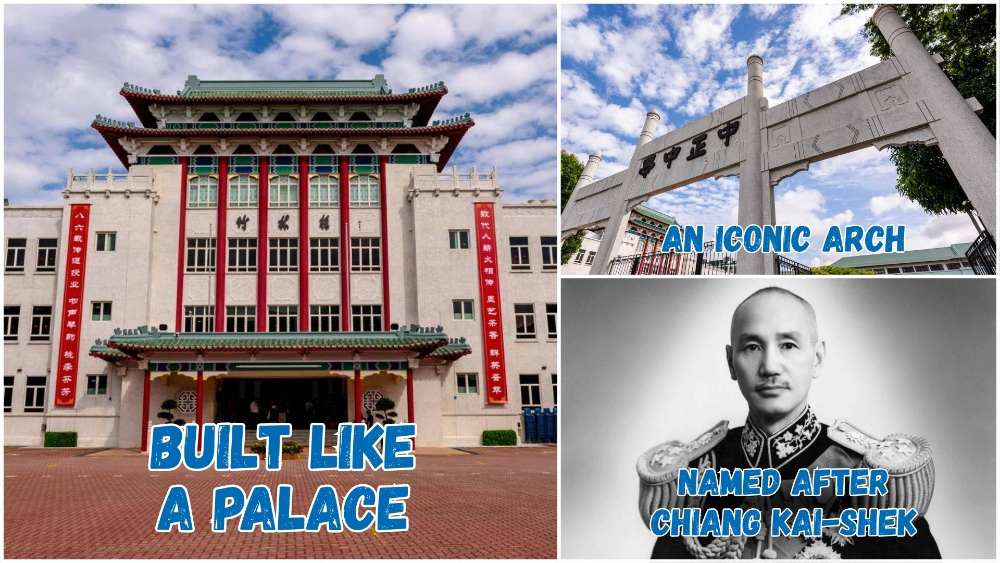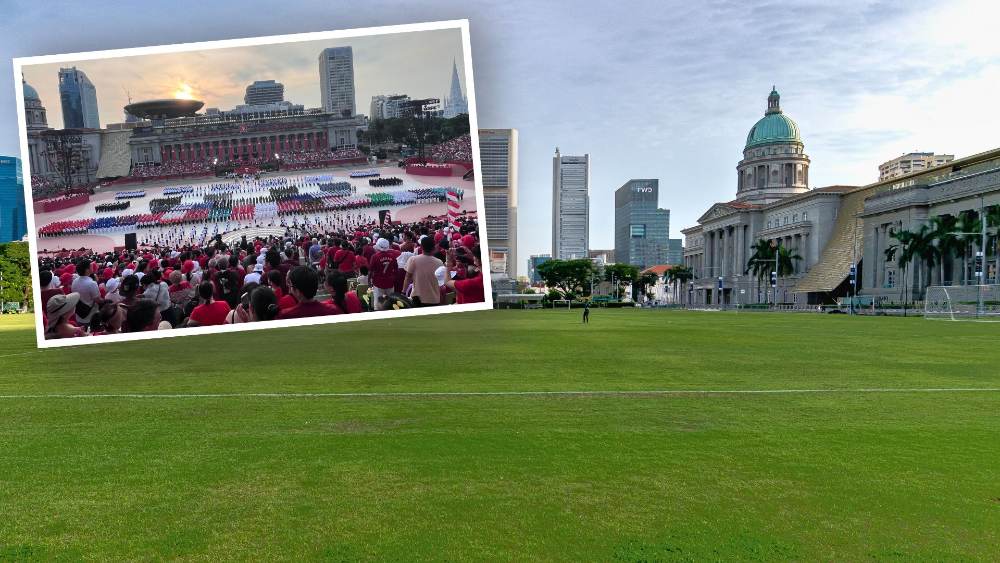Once A Humble Field, Now A National Monument: The Padang Roars To Life With 27,000 For SG60
This year, Singapore marks a major milestone: it's the Lion City's 60th birthday 🇸🇬 🎂 and National Day Parade (NDP) 2025 at the Padang promises to be nothing short of epic.
With an expected crowd of 27,000 and the largest-ever mobile stage in NDP history, Singapore’s 60th birthday celebration is set to be a blockbuster. Think high-flying drama, larger-than-life projections, and a 360-degree experience that stretches from cityscape to seascape – it’s giving national pride meets cinematic concert tour.
At the heart of the Padang, a 15m-wide, three-tiered, 20,000kg rotating stage rises up to 7m high, flanked by eight island stages and 270 LED screens, bringing every performance closer to the crowd. Even nearby buildings like The Fullerton Hotel and UOB Plaza One will come alive with SG60-themed projections by local artists such as Sam Lo, while land and water floats designed by artists with disabilities add even more heart to the show.
 There's plenty of room for over 2,100 Parade and Ceremony participants, including 40 marching contingents. | IMAGE: NG KAI
There's plenty of room for over 2,100 Parade and Ceremony participants, including 40 marching contingents. | IMAGE: NG KAI
Some NDP 2025 highlights we're looking forward to:
- Over 2,100 NDP participants from 40 marching contingents in the Parade & Ceremony segment, including these (hungry) first-timers.
- Crowd-favourite aerial displays featuring 26 Republic of Singapore Airforce aircraft, counting a Multi Axis Flypast led by F-15SG pilot Lieutenant Colonel (LTC) Muhammad Iskandar of 142 Squadron; the Transport Formation Flypast led by C-130 pilot LTC C. Teeneshwaran; and the State Flag Flypast led by CH-47F Heavy Lift helicopter pilot LTC Tan Guan Yong, assisted by Corporal (NS) Colin Quek who helps prep and rig the 1,500kg State Flag before it's lifted into the air.
- The first-ever maritime display as part of the Mobile Column, with five vessels from the Republic of Singapore Navy, Singapore Police Force, Singapore Civil Defence Force, and Maritime and Port Authority of Singapore (MPA).
- Nearly 500 youth volunteers – including 17-year-old Sathis Babu Lakshmi Prabha from Temasek Polytechnic – from TOUCH Community Services’ long-running motivator initiative, which has been involved in NDP since 2001. They'll be energising the crowd before the parade begins.
Before the flypasts, fanfare and fireworks take over, let’s take a moment to step back in time and appreciate the ground that had a front-row seat to Singapore's independence, cricket matches, royal festivities, and more – a site that is now one of Singapore's 75 National Monuments.
National Monuments of Singapore
What is a National Monument? Who gazettes them? How many national monuments are there in Singapore? To date, the Preservation of Sites and Monuments, a division of National Heritage Board, has identified and gazetted 75 buildings, structures and sites of national significance as an integral part of Singapore’s built heritage.
And we're here to tell you all about them - one National Monument at a time!
You've probably passed by or stepped into more than a few of them without realising they were National Monuments: Al-Abrar Mosque, Asian Civilisations Museum, the Civilian War Memorial, Saint Andrew's Cathedral, the Esplanade Park Memorials, Fort Siloso on Sentosa - no need to plan an itinerary for friends visiting from overseas; just show them this article ✌️
In this edition, we throw the spotlight on an iconic site where the Republic's first National Day Parade was held in 1966: the Padang.
📍 Location
The Padang was the 75th monument to be gazetted as a National Monument. Located near other National Monuments such as Saint Andrew's Cathedral, the Former City Hall, and the Former Supreme Court, the nearest MRT station to the Padang is City Hall.
📅 Significant dates
Dates built:
- 1820s: The Plain
- 1890: Enlarged to its current size through land reclamation
Milestones:
- 1820s: The Plain
- 1907: The Padang
Date gazetted:
- 9 Aug 2022
📜 History
In Munshi Abdullah's account of the 1819 landing, he mentions an "open space" located where The Arts House is today. This area was noted as a settlement that included the Temenggong’s residence. It is possible that this same "open space" was where Sultan Hussein Shah and Stamford Raffles later signed the 1819 treaty.
The area was later cleared and levelled to suit the needs of the colonial settlement. Although Raffles had intended for it to be reserved for public use, his absence from 1819 to 1822 led to the construction of private homes around the site. In the 1828 town plan drawn by Lieutenant Philip Jackson, the Padang was marked as an open square. Over time, this area was also known as The Plain, Raffles Plain, and the Esplanade, until it was officially named the Padang (Malay for "field") in 1907.
Around 1890, the Padang was expanded to double its original size through land reclamation. A road called New Esplanade Road was built between the sea and the field. In 1907, this road was renamed Connaught Drive by the Municipal Council to commemorate the Duke of Connaught's (brother of King Edward VII) visit in 1906. The road on the north side of the field, originally known as Esplanade Road, was also renamed St Andrew’s Road.
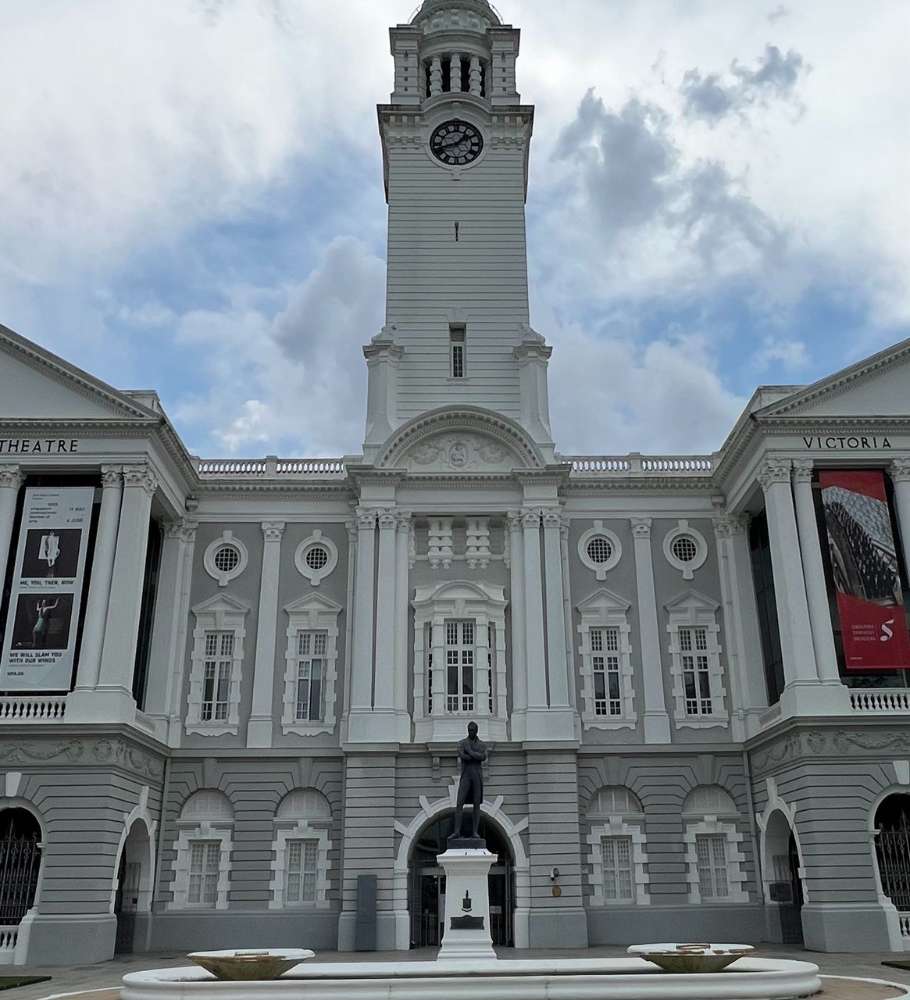 IMAGE: NG KAI
IMAGE: NG KAI
A 2.4-metre bronze statue of Sir Stamford Raffles once stood on the Padang, facing the sea. This statue was installed on 27 Jun 1887 to celebrate Queen Victoria's golden jubilee. In 1919, to mark the centenary of Singapore's founding by Raffles, the statue was moved from the Padang to the front of the Victoria Memorial Hall at Empress Place.
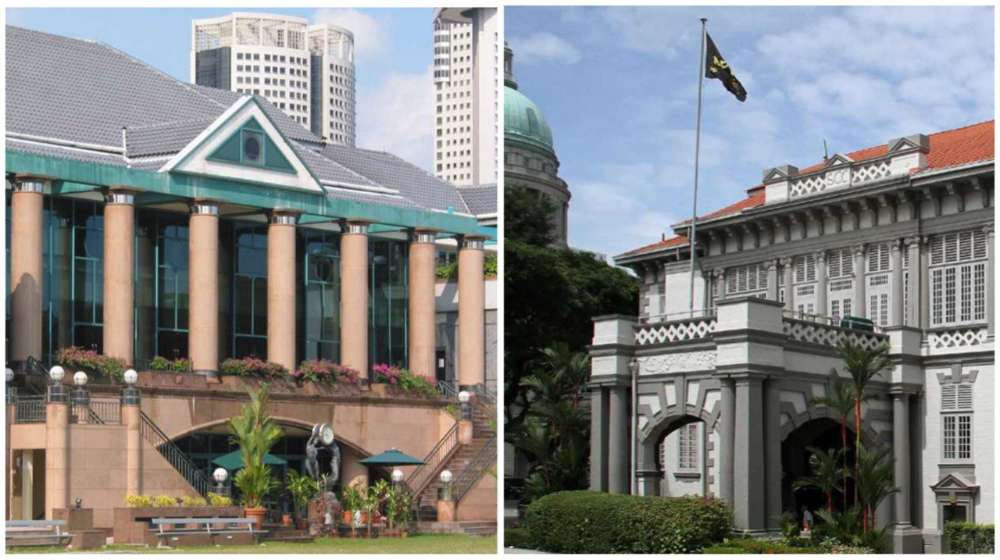 The Singapore Recreation Club (left) and Singapore Cricket Club. | IMAGES: WIKIMEDIA COMMONS/@CDGUZMAN (LEFT) AND @TONY HISGETT
The Singapore Recreation Club (left) and Singapore Cricket Club. | IMAGES: WIKIMEDIA COMMONS/@CDGUZMAN (LEFT) AND @TONY HISGETT
At opposite ends of the Padang, you'll find the Singapore Recreation Club (SRC) and the Singapore Cricket Club (SCC). The area where the SRC now stands was once a small hill, which was levelled to install a battery of 12-pounder guns for defence against ship attacks. This spot became known as Scandal Point, where people would gather to gossip. Both clubhouses have been fixtures of the Padang for over a century.
Suggestions for redeveloping the Padang date back to the 1830s, when then-Governor Robert Fullerton considered selling the area to developers. In the 1850s, the centre section of the Padang was proposed as a potential site for relocating St Andrew's Cathedral. In the 1930s, the Government suggested turning the Padang into a plaza, but public opposition prevented this plan from moving forward. As a result, the Padang has remained an open public space.
⛳️ Milestones
Singapore's first National Day Parade on 9 Aug 1966
The Republic celebrated its first NDP featuring a massive parade that saw the involvement of some 23,000 men, women and children, according to an article dated 10 Aug 1966 in The Straits Times. Thousands lined the streets to watch the grand affair, which saw Ministers and Members of Parliament turning up in uniform. The march-past took 90 minutes.
The Great Singapore Workout
Find this scene familiar? If you recognise it, chances are you're a Gen-Xer or Millennial. During the Great Singapore Workout in 1993, a crowd of 26,107 participated in a 15-minute workout at the Padang. The workout made it into the Guinness Book of Records for being the largest mass aerobic session held at one location at the time.
Archaeological Site
In 2003, a brief excavation in a corner of the Padang unearthed treasure. The artefacts recovered from the 14th-century “layer” of earth there included Chinese coins which had been partially melted by heat, and fragments of stone which might have been used in recycling the copper from these coins. Another two digs were carried out at the Padang in 2009 and 2019, respectively.
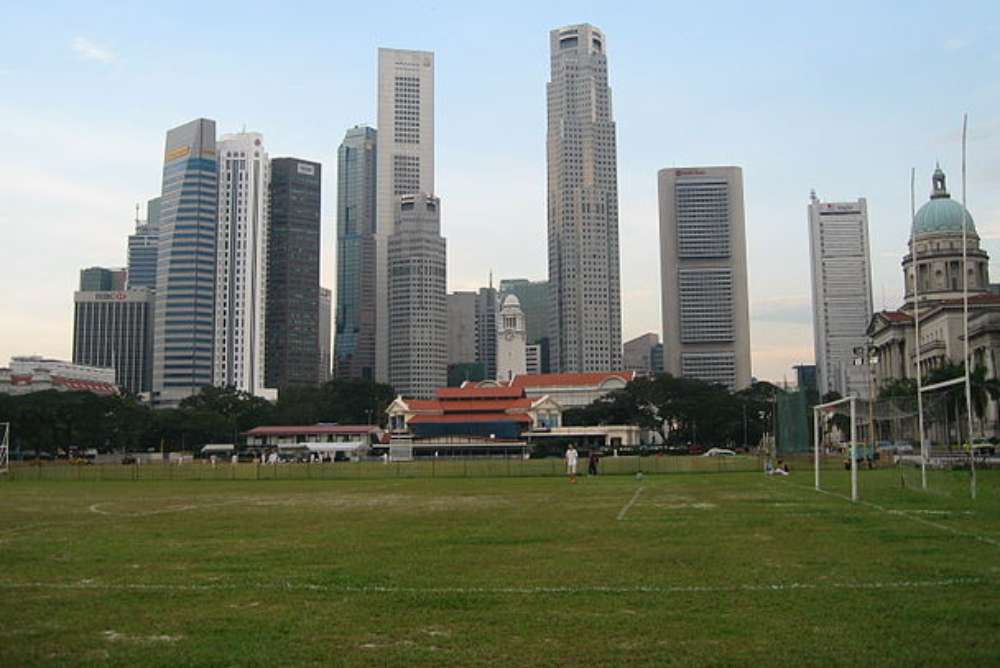 IMAGE: WIKIMEDIA COMMONS/@TERENCE ONG
IMAGE: WIKIMEDIA COMMONS/@TERENCE ONG
📐 Design and architecture
Since the construction of private European houses around its perimeter in the 1820s, the Padang’s surroundings have been marked by distinctly neo-Classical buildings, some of which have since been demolished. These include John A. Maxwell’s house (1827, later renovated and now known as The Arts House), the old Saint Andrew’s Cathedral (1836), the Singapore Cricket Club (1884), the Former City Hall (1929), and the Former Supreme Court (1939).
The Padang used to border on the sea. Successive land reclamations have since pushed the sea line to its present position at Queen Elizabeth Walk. It is presently bordered by Connaught Drive, Saint Andrew’s Road, and Stamford Road. The SCC and SRC sit on opposite ends of the Padang.
For the latest updates on Wonderwall.sg, be sure to follow us on TikTok, Telegram, Instagram, and Facebook. If you have a story idea for us, email us at


